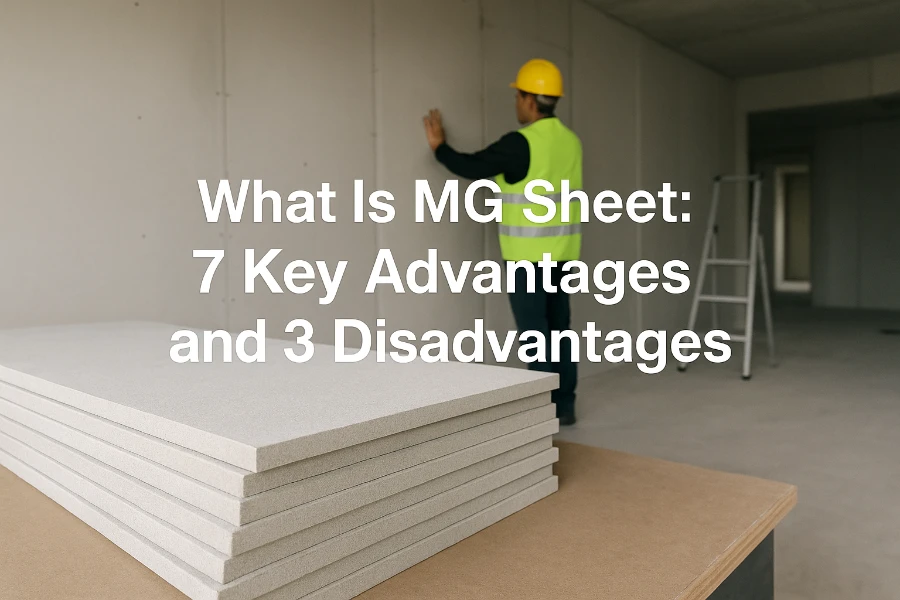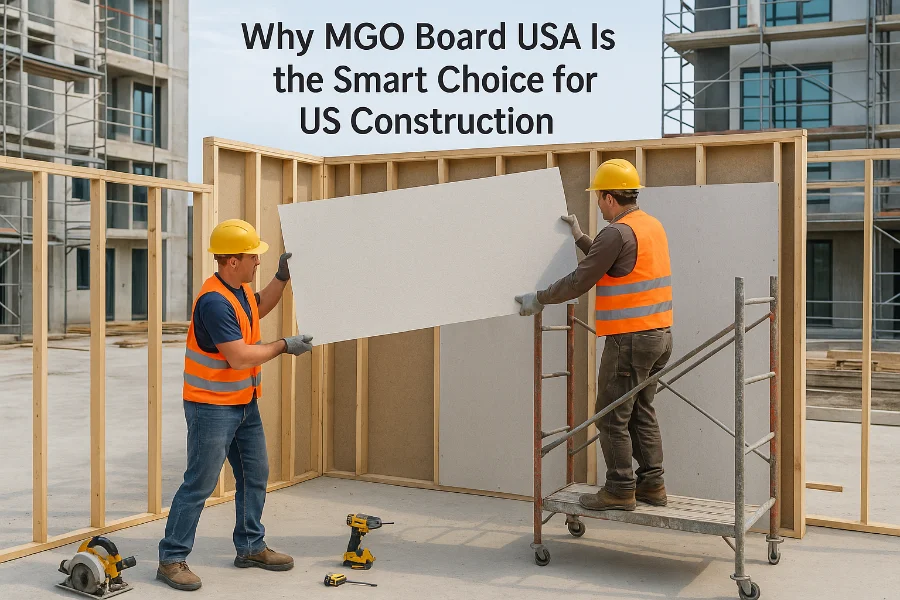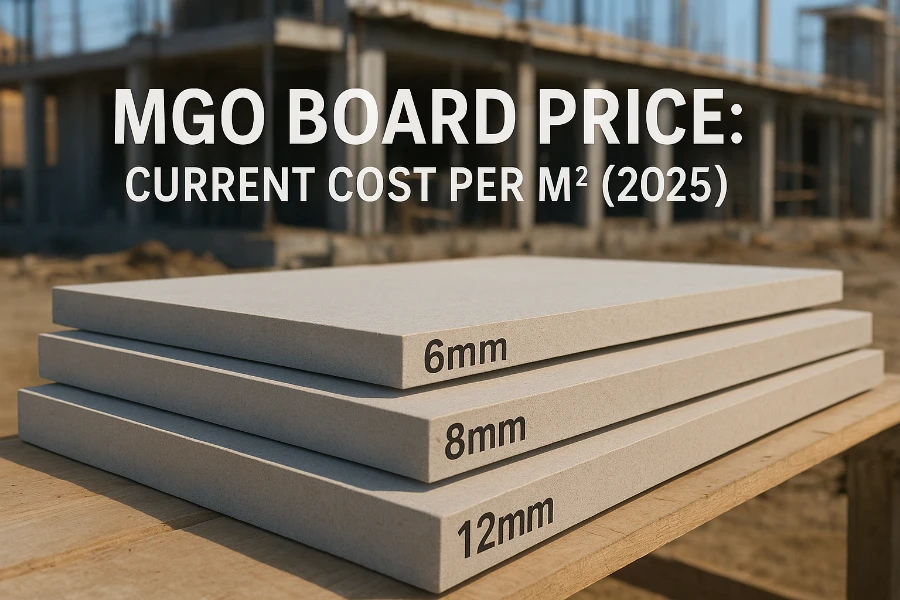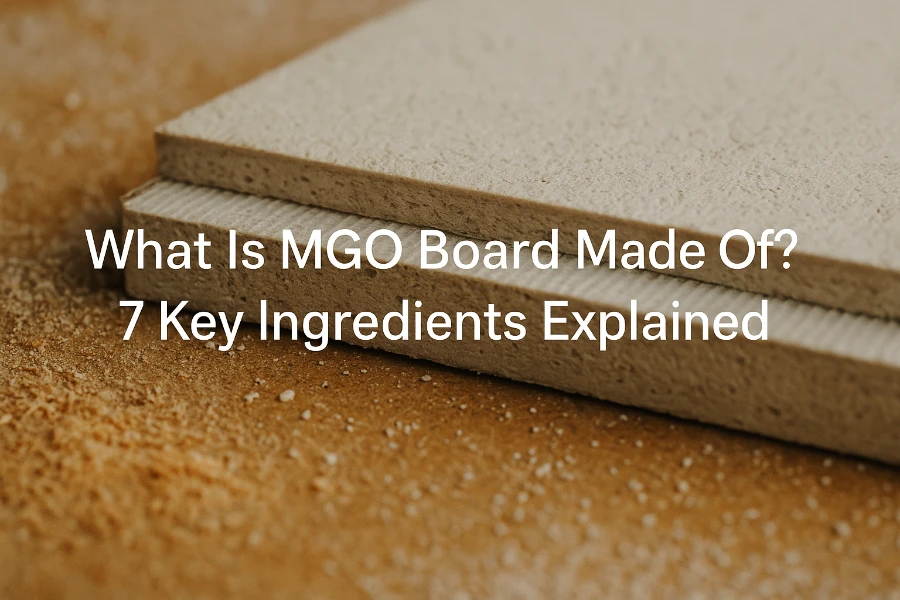Table of Contents
Introduction
Magnesium Oxide Sheet, commonly referred to as MG Sheet, has been gaining popularity in modern construction and industrial projects due to its unique combination of durability, safety, and environmental benefits. Unlike traditional building materials such as gypsum boards or plywood, Magnesium Oxide Sheet is made primarily from magnesium oxide and other reinforcing agents, giving it superior fire resistance, moisture-proof properties, and long-term stability.
In recent years, builders, architects, and project managers have increasingly turned to MG Sheet for applications ranging from wall panels and flooring to ceiling boards and partitions. Its versatility and eco-friendly nature make it a strong contender in both residential and commercial construction.
However, like any material, MG Sheet is not without its challenges. In this article, we will explore 7 key advantages and 3 notable disadvantages of Magnesium Oxide Sheet, helping you make an informed decision for your next project.
What Is MG Sheet?
MG Sheet, or Magnesium Oxide Sheet, is a high-performance building material primarily composed of magnesium oxide, magnesium chloride, and various reinforcing additives. This combination gives it excellent fire-resistant, moisture-proof, and anti-corrosion properties, making it a reliable choice for modern construction.
Composition and Types
MG Sheet comes in various types and thicknesses, typically ranging from 6mm to 20mm, depending on the intended application. Some sheets are reinforced with glass fiber mesh or other strengthening agents to enhance structural stability, while others are designed for lightweight and easy installation.
Common Applications
MG Sheet is versatile and can be used in a wide range of construction projects:
-
Wall panels: Ideal for partition walls, interior walls, and exterior cladding due to its fire resistance.
-
Flooring: Serves as a strong subfloor material that resists moisture and wear.
-
Ceilings: Lightweight yet durable, suitable for suspended ceiling systems.
-
Partitions and decorative panels: Can be cut, shaped, or painted to match various design requirements.
The material’s adaptability, combined with its safety and environmental advantages, makes MG Sheet a preferred option for architects, builders, and developers aiming for high-quality, long-lasting constructions.
7 Key Advantages of MG Sheet
1. Fire Resistance
One of the most significant advantages of MG Sheet is its outstanding fire resistance. Unlike traditional wood or gypsum boards, Magnesium Oxide Sheet can withstand extremely high temperatures without igniting or emitting toxic fumes. This property makes it a preferred choice for areas where safety is critical, such as commercial buildings, schools, hospitals, and high-rise apartments.
Moreover, MG Sheet meets international fire safety standards, providing architects and builders with confidence that their constructions are protected. Its non-combustible nature also helps reduce the spread of fire, giving occupants more time to evacuate in emergencies. For projects aiming for fire-rated walls or ceilings, Magnesium Oxide Sheet is often a go-to solution.
2. Moisture and Water Resistance
Another major advantage of MG Sheet is its excellent moisture and water resistance. Unlike gypsum boards, which can absorb water and weaken over time, Magnesium Oxide Sheet remains stable in humid environments. This makes it ideal for bathrooms, kitchens, basements, and areas exposed to occasional flooding or condensation.
The moisture-resistant property prevents mold and mildew growth, which not only preserves the structural integrity of the building but also promotes a healthier indoor environment. Builders and homeowners alike appreciate that MG Sheet can maintain its performance over decades without warping or swelling, reducing long-term maintenance costs.
3. Durability and Strength
Despite its relatively lightweight nature, MG Sheet is remarkably strong and durable. It provides high compressive strength, impact resistance, and dimensional stability, making it suitable for both load-bearing and non-load-bearing applications.
MG Sheet’s durability ensures that walls, ceilings, and floors remain intact under daily wear and tear. In comparison to wood or traditional plasterboards, Magnesium Oxide Sheet resists cracking, chipping, and deformation, which makes it particularly valuable in high-traffic areas such as offices, commercial spaces, and public buildings. This long-lasting performance translates into fewer repairs and replacements over time, adding to its overall cost-effectiveness.
4. Eco-Friendly Material
Sustainability is increasingly important in modern construction, and MG Sheet excels in this area. Made primarily from natural minerals, it is a renewable and environmentally friendly material. The manufacturing process produces minimal waste and avoids the release of harmful chemicals, unlike some synthetic alternatives.
Using MG Sheet contributes to greener building practices, earning points for environmental certifications such as LEED. Additionally, its long lifespan reduces the need for frequent replacements, further lowering the environmental footprint of a building. For developers aiming for eco-conscious projects, Magnesium Oxide Sheet is a responsible and forward-thinking choice.

5. Lightweight and Easy to Install
MG Sheet is significantly lighter than many traditional building materials, such as cement boards or wood panels. This lightweight characteristic simplifies handling, transportation, and installation. Construction teams can carry and position panels with less labor, reducing the risk of injury and lowering labor costs.
Installation is also faster, as MG Sheet can be cut to size easily and does not require complex tools or techniques. Its smooth surface ensures easy alignment and finishing, saving time on plastering or sanding. For large-scale projects, this efficiency can translate into significant cost and time savings.
6. Versatility in Design
Another advantage of MG Sheet is its versatility. It can be cut, drilled, sanded, or shaped to suit a variety of architectural and interior design needs. Its surface can accept paint, wallpaper, tiles, or veneers, allowing designers to achieve both functional and aesthetic goals.
MG Sheet is also suitable for creating partitions, false ceilings, decorative panels, and even furniture inserts. Its adaptability makes it a preferred choice for both modern minimalistic designs and more intricate decorative finishes. This versatility reduces the need to combine multiple materials in a project, simplifying construction and maintaining a uniform appearance.
7. Cost-Effectiveness Over Time
While the initial cost of MG Sheet may be higher than traditional gypsum boards or plywood, its long-term advantages outweigh the upfront expense. The combination of durability, low maintenance, and energy efficiency means that buildings constructed with Magnesium Oxide Sheet incur lower repair and replacement costs over time.
Additionally, its fire-resistant and moisture-proof properties can prevent costly damages that may arise from accidents, floods, or mold growth. By investing in MG Sheet, developers and homeowners gain peace of mind and long-term savings, making it a smart choice for sustainable and financially sound construction.
3 Disadvantages of MG Sheet
1. Initial Cost Higher Than Traditional Materials
One of the main drawbacks of MG Sheet is its higher initial cost compared to traditional building materials like gypsum boards or plywood. While the long-term benefits often justify the investment, the upfront price can be a concern for budget-sensitive projects.
For small-scale renovations or low-budget construction, the higher material cost may influence decision-making, requiring project managers to carefully balance performance with budget constraints. However, it’s important to consider that the durability, fire resistance, and moisture-proof properties of MG Sheet often reduce maintenance and replacement expenses over time, offsetting the initial investment.
2. Sweating and Corrosion Risk with Improper Production
A critical disadvantage arises when MG Sheet is produced using improper methods, especially with magnesium chloride-based processes. Poorly manufactured sheets can absorb moisture and “sweat” under humid conditions, releasing water droplets on walls or ceilings.
This sweating not only affects the aesthetics of the installation but can also create conditions for mold growth. Moreover, the moisture combined with residual chloride ions may corrode nearby metal components, including steel frames, fasteners, or electrical fittings. For projects involving structural steel or sensitive metal fixtures, selecting properly manufactured MG Sheet is essential to avoid long-term damage.
3. Installation Constraints in Certain Environments
While MG Sheet is versatile, it does have some installation limitations. Extremely humid, wet, or outdoor environments with prolonged exposure to sunlight or rain may require additional protective measures. Specialized adhesives, sealants, or coatings may be necessary to ensure the material performs optimally.
Additionally, proper installation demands skilled labor familiar with cutting, fixing, and sealing MG Sheet. Incorrect handling can compromise its fire resistance, moisture-proof capabilities, and structural stability. Therefore, while Magnesium Oxide Sheet is relatively easy to work with, certain projects may require additional planning and expertise to maximize its performance.
Conclusion
MG Sheet offers a remarkable combination of benefits that make it a popular choice in modern construction. Its 7 key advantages—from fire resistance and moisture-proof properties to durability, eco-friendliness, versatility, and long-term cost-effectiveness—demonstrate why builders, architects, and developers increasingly rely on this material for walls, floors, ceilings, and partitions.
At the same time, it is important to be aware of its 3 main disadvantages. The higher initial cost requires careful budget planning, while improperly produced sheets can lead to sweating and corrosion of metal components. Additionally, installation in certain environments may require specialized skills or protective measures to ensure optimal performance.
By understanding both the strengths and limitations of MG Sheet, you can make informed decisions for your construction projects, achieving a balance between safety, durability, and design flexibility.
If you want to learn more about high-quality MG Sheet options, get technical specifications, or receive personalized advice for your project, contact our team today. Our experts are ready to help you select the best solutions tailored to your needs.
Discover why MGO board USA is the smart choice for American construction—fire-resistant, durable, eco-friendly, and compliant with US building standards.
Discover the current MGO board price per m² in 2025. Learn factors affecting cost, compare with fiber cement boards, and get tips to save on your project.
Discover what MGO board is made of: 7 key ingredients including MgO, MgCl₂ or MgSO₄, sawdust, perlite, fiberglass, and non-woven fabric.




